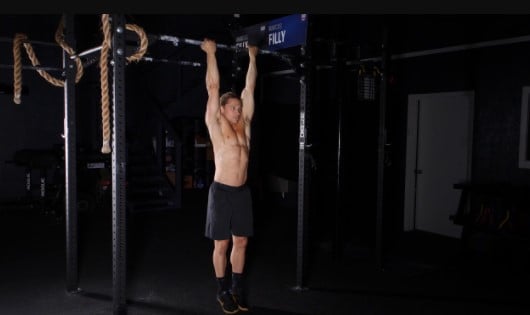While rock climbing is really a full-body workout, there are certainly some parts of your body that need to be developed specifically for the sport, such as your forearms and grip strength. So, are forearm workouts good for rock climbing?
Forearm workouts are certainly good for rock climbing, since they increase your grip strength. Your grip strength is often what fails first when climbing, so building your grip strength and stamina through forearm workouts will help you climb harder, longer, and more intensely.
Let’s look at why forearm workouts specifically are helpful as well as some good exercises to do to increase your grip strength. The Color the Crag team has you covered!
How Forearm Workouts Build Grip Strength
While your fingers only have very small muscles and generally rely on tendons for the bulk of the fist opening and closing motions, these tendons can be trained and strengthened which also helps prevent injuries to your pulleys, which is the one of the most common climbing injuries.

Your wrist muscles and tendons also play a role in climbing, since your entire body weight might at times be hanging from one hand. If your wrists aren’t strong and limber, this can cause various injuries.
Finally, the muscles and tendons in your forearms all the way up to and including your elbows are also enormously important for grip strength. When you make a fist and squeeze tight, you will feel and probably see that your forearm muscles tense up, so you can imagine how that translates to grabbing holds in climbing.
If you have tried climbing before, towards the end of the session you likely noticed that you can hardly make a fist and that your forearms feel hard to the touch – this is what climbers call getting ‘pumped out’ and once you are pumped, it’s very hard to recover and continue climbing until you take a break.
Building up all of the muscles and tendons in your hands and forearms will allow you to grip and use ever smaller holds (down to those barely-there crimps) and delay the onset of the pumped feeling to allow you to climb longer and stronger.
Be Sure To Do Antagonist Training
Antagonist training is training the muscles that do the exact opposite of the muscles that you are targeting. So, in this case, training your grip strength will target the muscles and tendons on the palm side of your hand and the inside of your forearm. But, antagonist training will include the muscles and tendon on the back of your hand and forearm.

Antagonist training helps ensure that no one muscle group becomes disproportionately stronger than the opposing muscle group, which can cause pain and lead to injury. Elbow pain is particularly common among climbers who focus too much on grip strength training without including antagonist training.
Examples of Forearm Workouts
There are several different types of forearm workouts that you can do to increase your climbing abilities, such as:

Crush Gripper Tools
These tools are designed to be held in the palm of your hand, and you then squeeze them like you are making a fist. Some have adjustable resistance so you can make it more difficult as you get stronger.

Finger Extensions
Finger extensions are the antagonist exercise of crush gripper tools. These can either be done with a hefty rubber band or a specifically designed finger extension band. Simply put all of your fingers inside the band and then stretch the band to splay your fingers out. You can also get a similar effect from doing the same motion with your hand in a bucket of rice.
Barbell Finger Curls
Hold a barbell in front of you with your palms facing out. Let it roll down your palm until just your fingertips are holding it, then roll it back into your palm. Repeat and add weight as necessary.

Pinch and Hold
Pinch a weight plate or other flat, heavy object between your thumb and fingers and extend your arm straight down at your side. Hold it for 8-10 seconds and then switch hands.

Wrist Curls
Lay your forearm along a weight bench with your palm facing up and your hand over the end of the bench. Grip a dumbbell in your hand and curl your wrist from full extension to full flexion.

Reverse Wrist Curls
You guessed it – this is the antagonist training to counterbalance wrist curls. Simply flip your forearm over on the bench and repeat the same range of motion.

Dead Hangs
Dead hanging from a bar may not sound hard, but it will absolutely work your forearms until they are burning. Simply grab the bar with both hands (or one hand, for a bigger challenge) and hang there in timed sets or until failure.

Frequently Asked Questions
How effective is rock climbing for strengthening forearms?
While rock climbing is really a full-body exercise, your forearms will certainly get a workout from climbing. In fact, your forearms are usually the first muscle group to reach the point of fatigue (i.e. get pumped). And, many people who are used to other types of working out will likely have relatively strong shoulders, biceps, legs, etc. but forearm training doesn’t usually occur to people unless they participate in a sport that necessitates it.
Does rock climbing give you bigger forearms?
It can, yes. As you get stronger and your grip strength increases, your forearms will likely get bigger or at least more defined and vascular.
